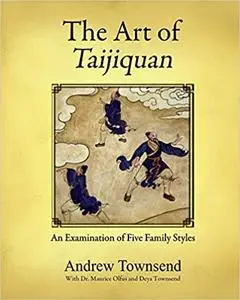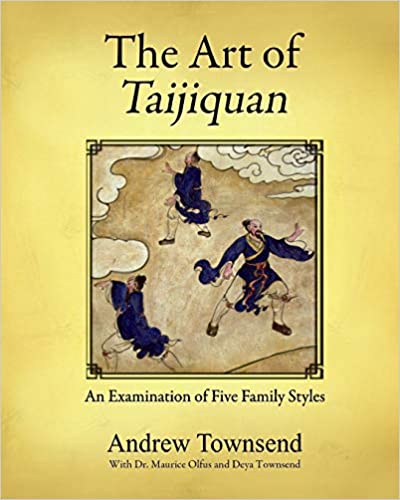Andrew Townsend, "The Art of Taijiquan: An Examination of Five Family Styles"
English | ISBN: 1978071876 | 2017 | 429 pages | AZW3 | 5 MB
English | ISBN: 1978071876 | 2017 | 429 pages | AZW3 | 5 MB
The intended purpose of this book is to enhance your understanding and appreciation of the Chinese martial art of taijiquan, of which there are five major family styles: Chen, Yang, Wu, Wh/Hao, and Sun. Although anyone interested in learning and practicing this profound and challenging art will benefit from studying the material presented here, it will be most relevant to those individuals who presently practice at least one traditional family style of taijiquan. This book is divided into three sections. Part one addresses the fundamental concepts and principles of the art of taijiquan. As you read through this first section of the book, you will note that many of principles and concepts are shared by more than one family style, and that the most basic principles are universal to all styles of taijiquan.Part two, which is the main focus of this book, presents a number of postures which are included in all five of the main family styles of taijiquan. Practitioners of these styles will be familiar with these postures, although the names may vary somewhat depending upon the family style.In deference to the original thirteen postures of taijiquan, thirteen representative postures that occur in each of the five major family styles of taijiquan have been selected for analysis and comparison.As the various family styles of taijiquan developed and diverged from one another, each family style developed its own distinctive defining characteristics. While some postures, such as Single Whip (dan bian) or Parting the Wild Horse’s Mane (ye ma fen zhong), retained their original names, the postures themselves began to change in appearance. These differences can appear, at least superficially, to be quite distinct. Adherents of a given style are encouraged to discover both the differences and the shared elements within each posture presented within part two as they are expressed individually in each of the family styles.Part three explores the more martial aspects of the art of taijiquan, which are more evident in the so-called “fast forms” as well as in the two-person practices, such as pushing hands (tuishou), large Rollback (dalu) and choreographed dual-person sets (sanshou). Weapons training, including the use of straight swords (jian), curved swords (dao), spears (qiang), and halberds (guandao), to list the more common weapons, are also an important component of each of the five family systems of taijiquan. This book encourages practitioners of a given family style of taijiquan to at least superficially explore the principles and practices of the other four family styles. There are a number of distinct benefits to be obtained from practicing multiple family styles of taijiquan. One particular benefit from practicing multiple family styles of taijiquan is the overall depth of understanding of the art that is gained from recognizing the differences among the various family styles while also acknowledging their unifying characteristics. Having completed a thorough review of the fundamentals of the art of taijiquan, an examination of a number of representative postures common to each of the five major family styles of taijiquan, and an exploration of the martial applications of taijiquan as presented within this book, it is hoped that inquisitive readers will have increased both their knowledge as well as their understanding of this richly complex and profound martial art. Based upon this increased store of knowledge and understanding, it is further to be hoped that such readers will be inspired to explore multiple family styles of taijiquan in order to expand and broaden their practice.



